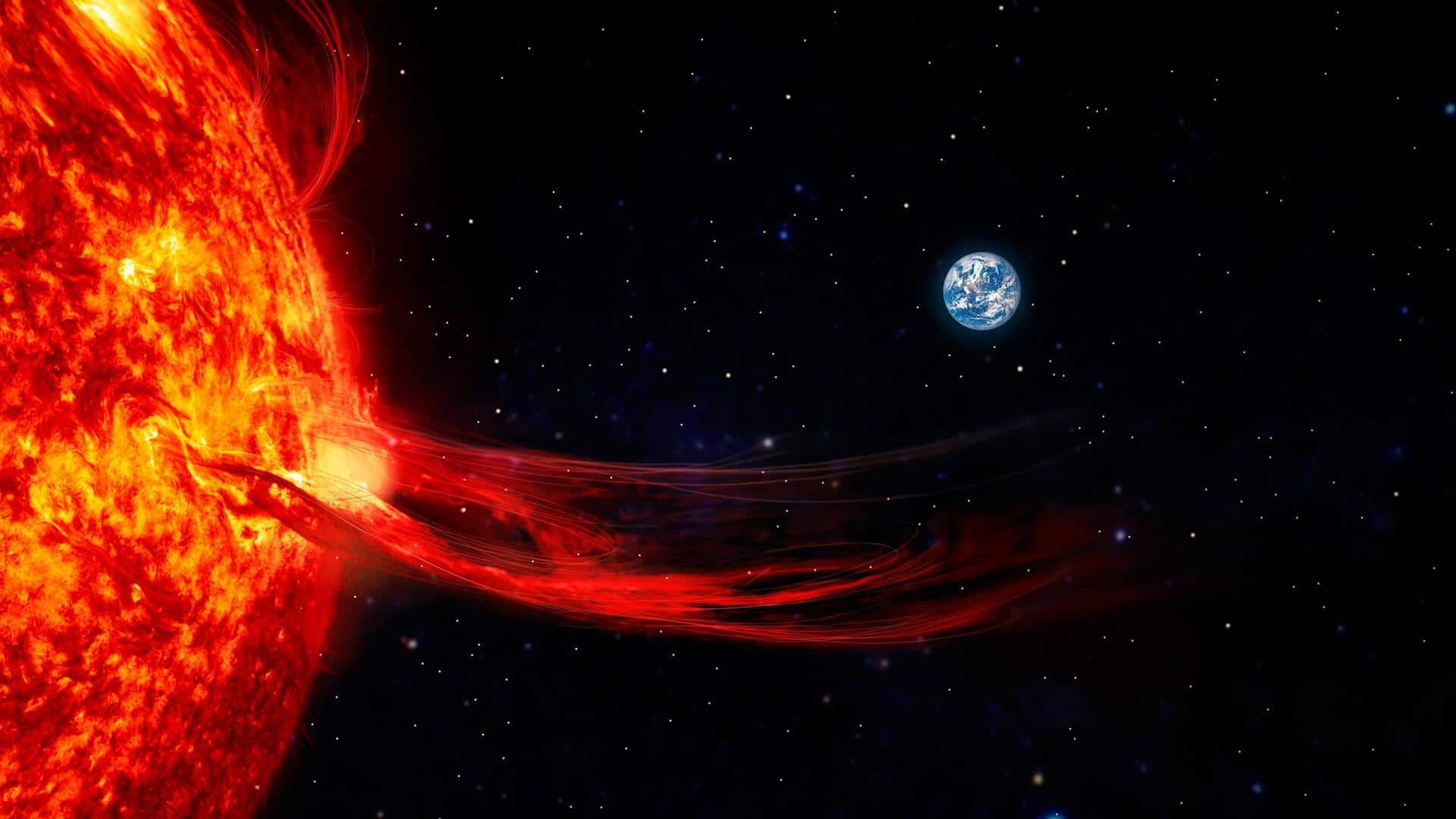Unveiling the Science of Space Weather: Solar Flares & Earth. Dive into the cosmic drama and its earthly impacts
We all know about the weather here on Earth – the sunshine, the rain, the occasional dust
storm that messes up our hair. But did you know there's also weather happening in space? It's called "space weather," and it's mostly influenced by our very own star, the Sun.

The Sun isn't just a big ball of fire giving us light; it's a dynamic and temperamental entity, constantly emitting energy and particles into space. One of the most dramatic forms of space weather comes from solar flares, and they can have surprising effects on our planet.
Solar flares are explosive events on the Sun releasing intense radiation, impacting technology
Solar flares are like massive explosions on the Sun's surface. Imagine a volcano erupting, but instead of lava, it's spewing out intense bursts of electromagnetic radiation – things like radio waves, X-rays, and gamma rays.

These flares happen when magnetic energy that has built up in the solar atmosphere is suddenly released. Scientists are still working to fully understand the exact mechanism that triggers these flares, but they know it has to do with the Sun's complex magnetic field.
The field lines get twisted and tangled, and then, boom, a flare erupts. While seemingly distant, these eruptions can impact everything from our satellites orbiting Earth to the power grids which light up our homes.
Understanding these phenomena is crucial for protecting our technology and infrastructure.
Solar flares release powerful radiation, impacting Earth despite protection
These flares release energy across the entire electromagnetic spectrum. The energy unleashed by a single solar flare can be equivalent to millions of hydrogen bombs exploding simultaneously! When a solar flare erupts, the radiation travels at the speed of light, reaching Earth in just eight minutes.

Fortunately, Earth's atmosphere protects us from the most harmful radiation, especially the X-rays and gamma rays. However, even though we're shielded, the effects of these flares can still be felt.
The charged particles released alongside the radiation can take a little longer to reach us, perhaps a day or two, but they can still cause significant disturbances.
Solar flares disrupt radio waves, causing blackouts and communication delays
One of the immediate effects of a solar flare is the disruption of radio communications. The X-rays emitted by flares can ionize the upper layers of Earth's atmosphere, affecting the way radio waves travel.

This can lead to short-wave radio blackouts, making it difficult for ships, airplanes, and other long-distance communicators to stay in touch. Think of it like a sudden static interference on your radio, but on a much grander scale.
For instance, emergency services relying on shortwave communication can experience serious delays during response times when strong solar flares erupt. The level of impact can range from mild disturbance to complete communication breakdown.
Solar flares release particles causing geomagnetic storms on Earth
The charged particles released during a solar flare, mainly electrons and protons, travel outwards into space. Some of these particles eventually reach Earth, interacting with Earth's magnetic field. This interaction can cause geomagnetic storms, which are disturbances in the Earth’s magnetosphere.

These storms can disrupt satellite operations, causing them to malfunction or even lose control. Satnav systems like GPS can become inaccurate, which could affect navigation for airplanes, ships, and even our smartphones.
In severe cases, geomagnetic storms can also induce currents in power grids on Earth, leading to blackouts like the one which occurred in Quebec, Canada, in 1989.
solar flares create auroras, showcasing nature's beauty
But, it's not all doom and gloom. While solar flares can cause problems, they also produce some spectacular natural phenomena. When charged particles from the Sun interact with the Earth's atmosphere, they can create the beautiful auroras – the Northern and Southern Lights.

These shimmering curtains of light are a stunning display, painting the sky with vibrant colors. They're most visible in high-latitude regions, like Alaska, Canada, and Scandinavia, and they are an undeniable reminder of the Sun's power and its connection to our planet. So, next time you hear about a solar flare, remember that it's not just a science story; it's a story about the dynamic relationship between the Sun and Earth











